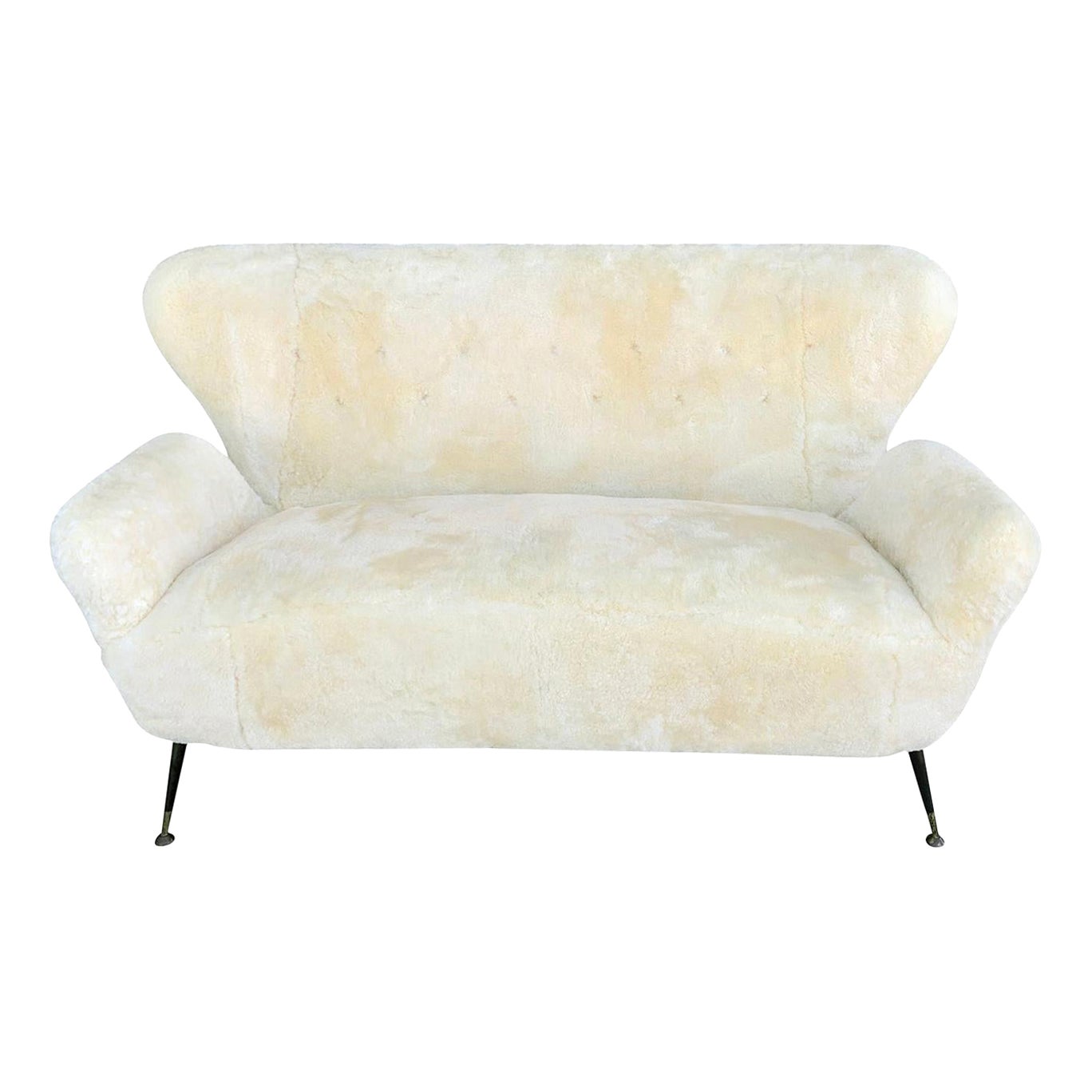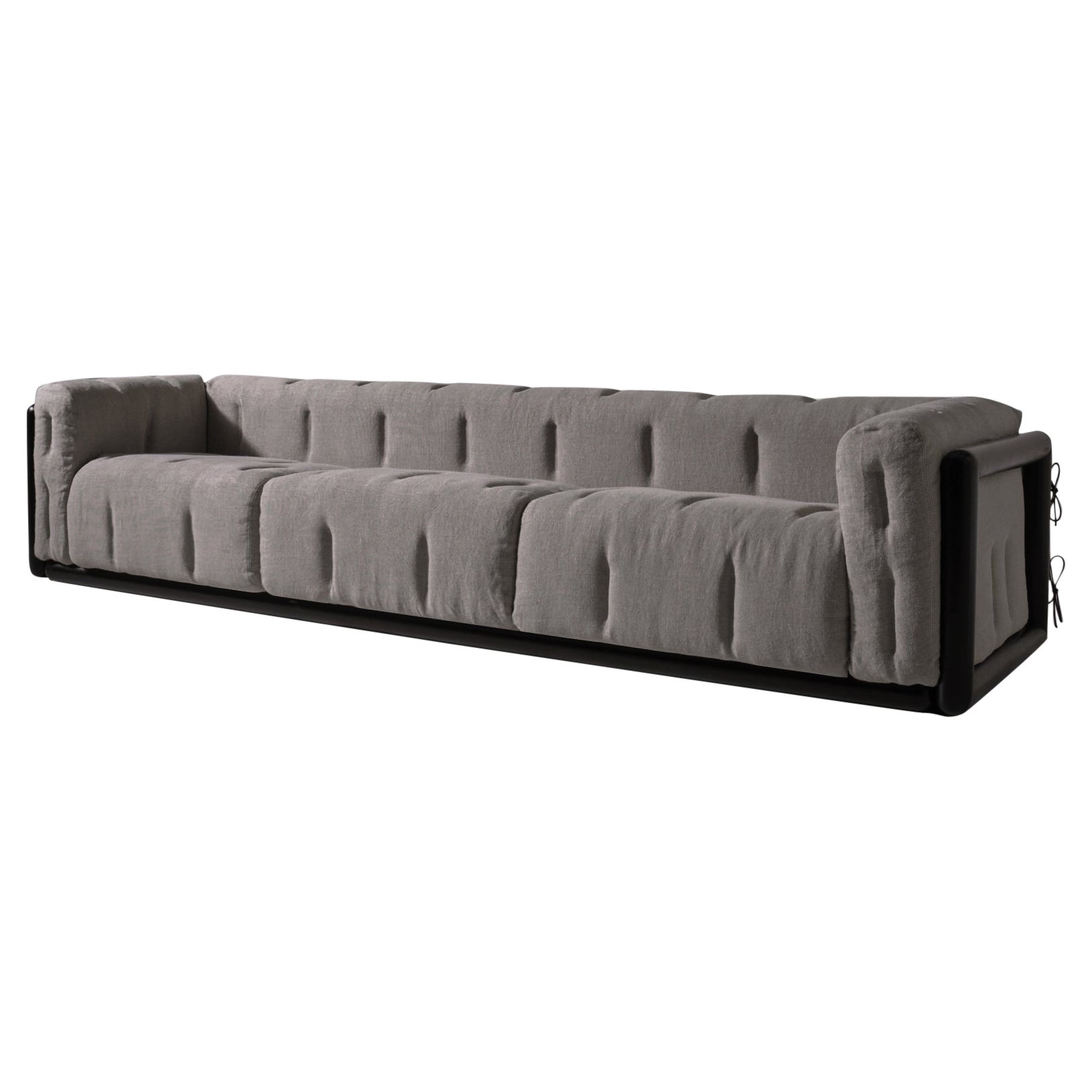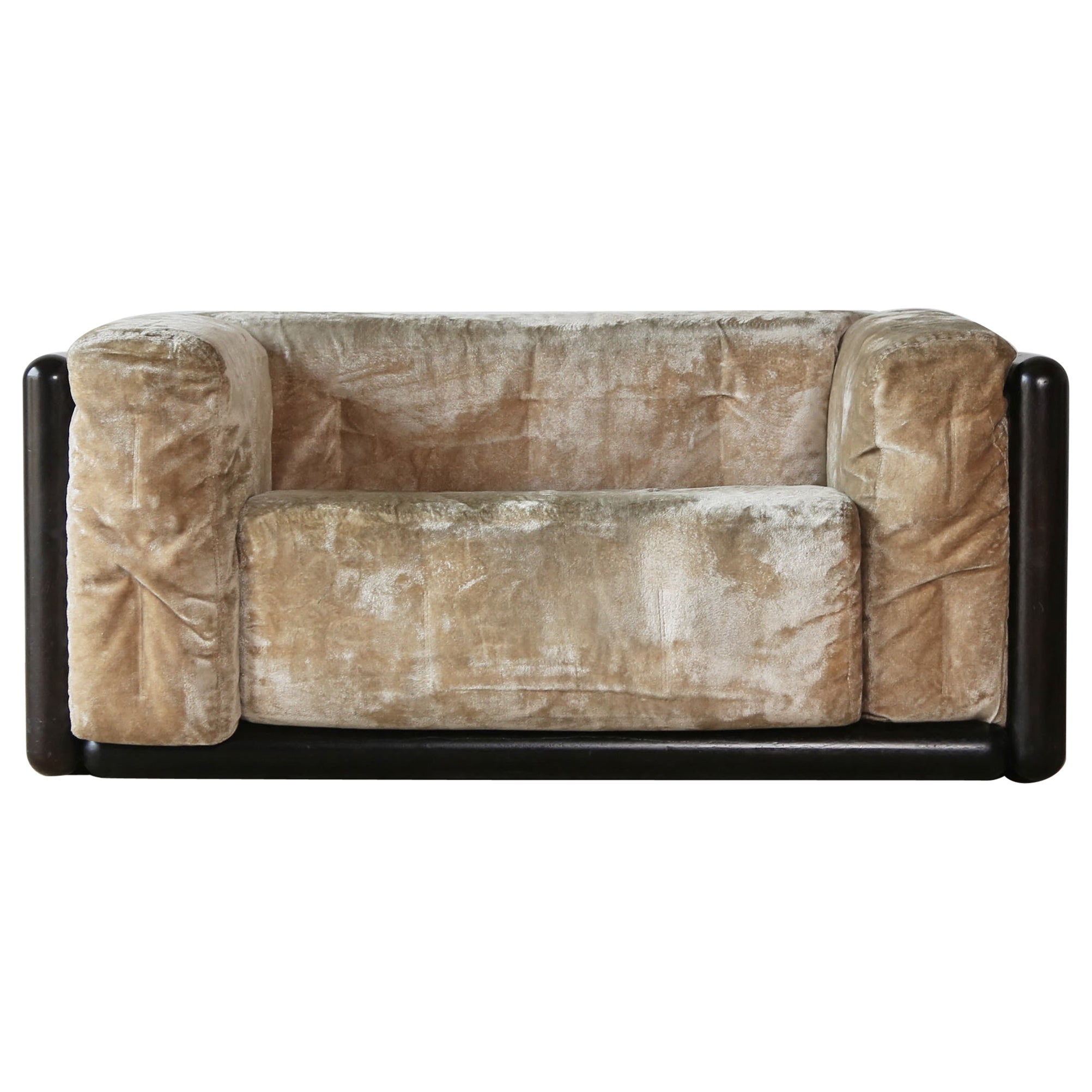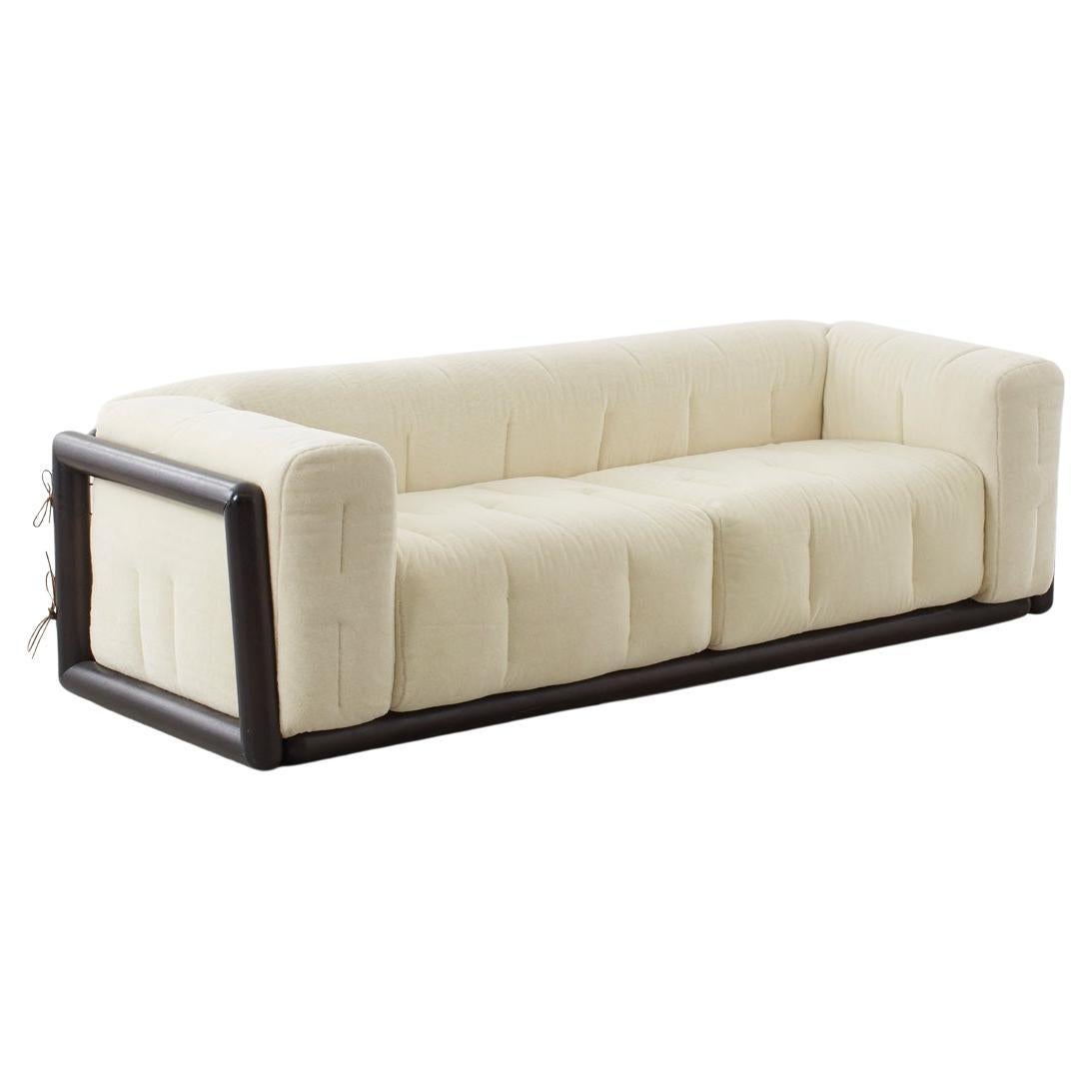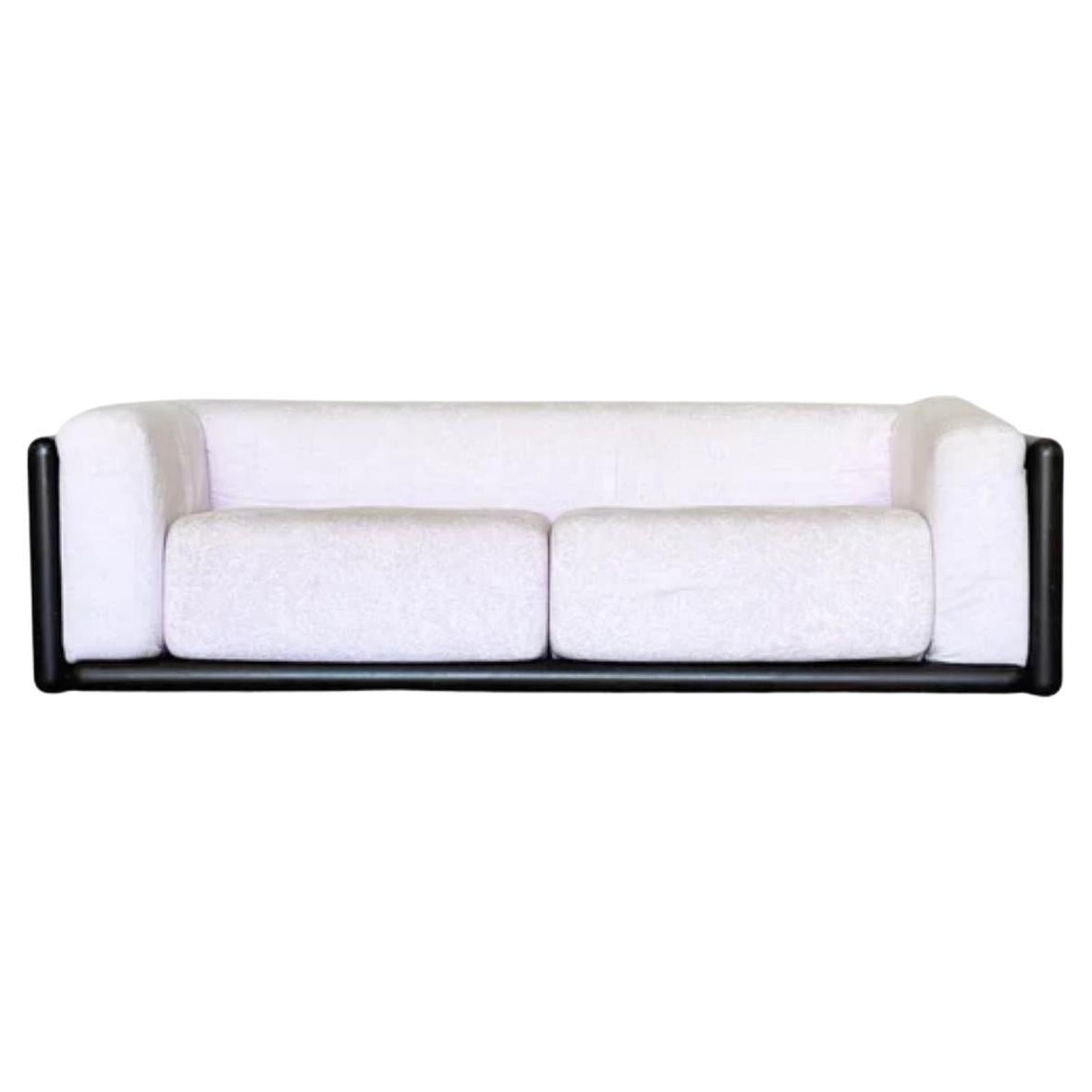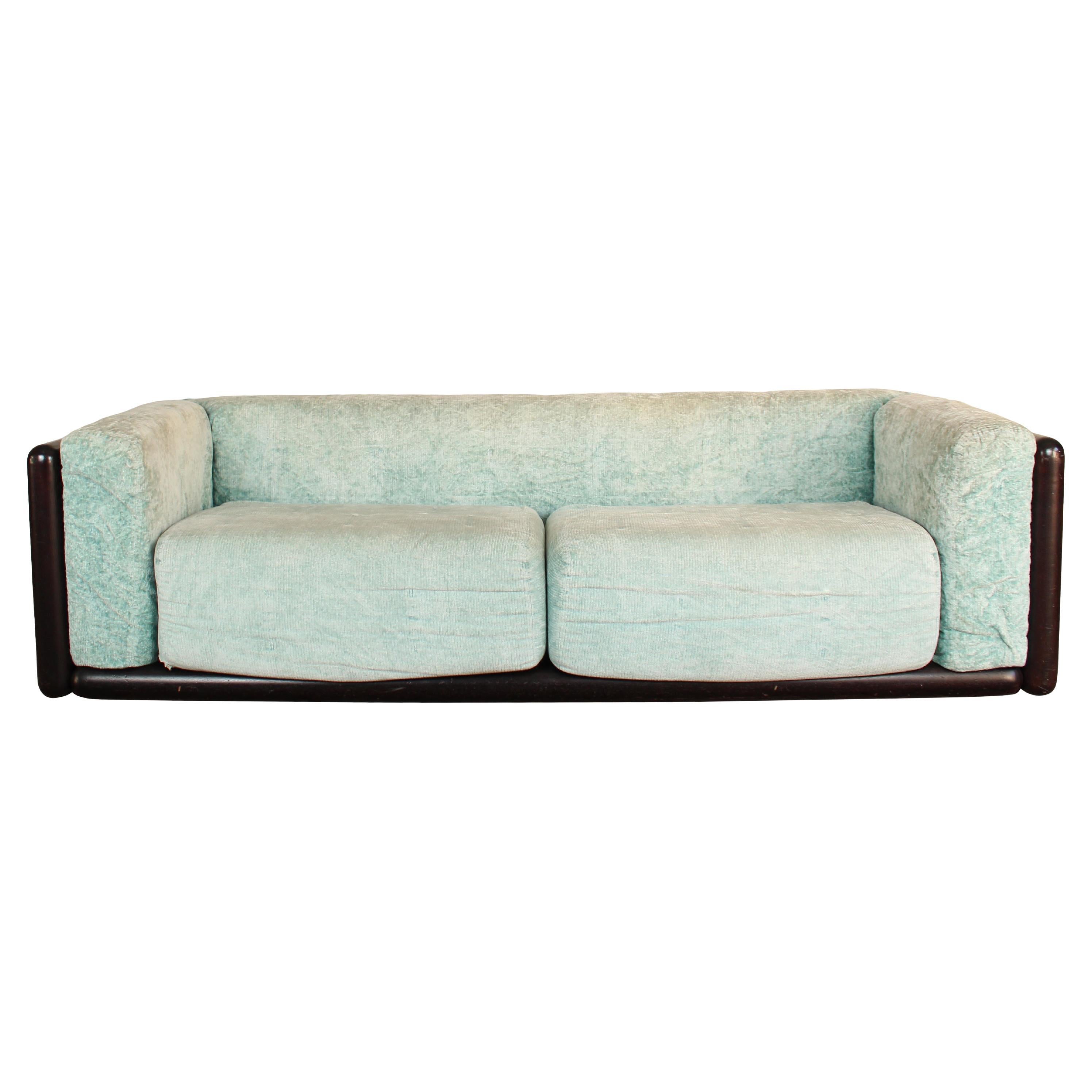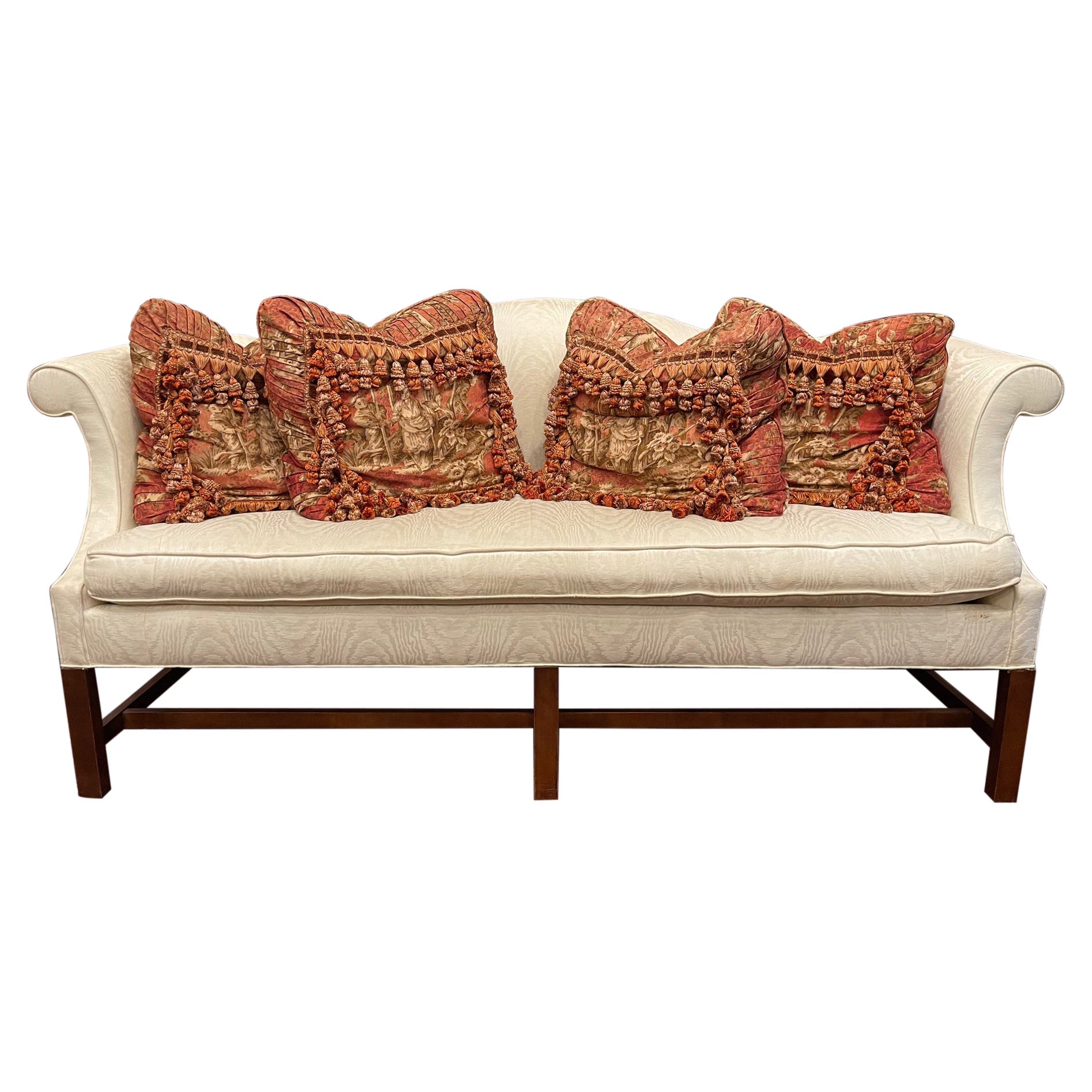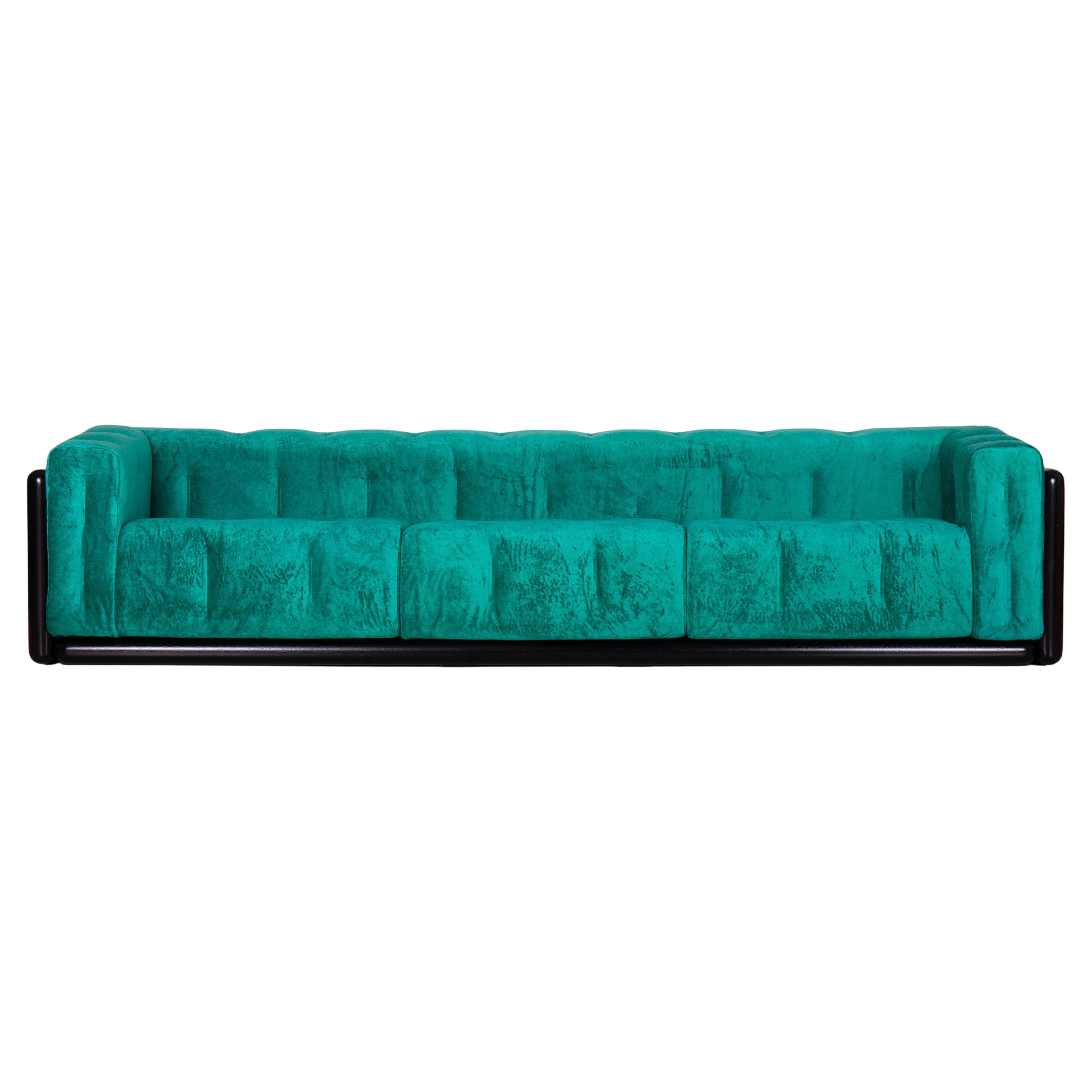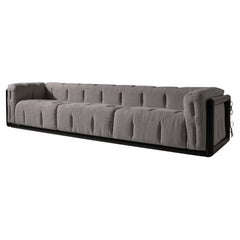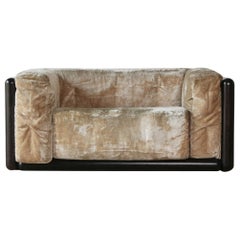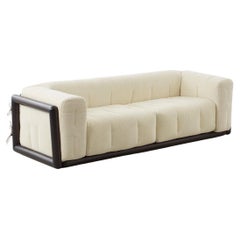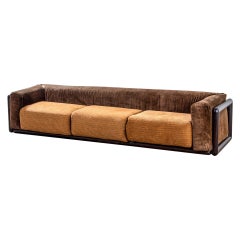
20th Century Carlo Scarpa Cornaro Sofa for Simon Gavina 3 Seats '70s
View Similar Items
Want more images or videos?
Request additional images or videos from the seller
1 of 7
20th Century Carlo Scarpa Cornaro Sofa for Simon Gavina 3 Seats '70s
About the Item
- Creator:Carlo Scarpa (Author),Simon Gavina Editions (Manufacturer)
- Dimensions:Height: 24.81 in (63 cm)Width: 119.69 in (304 cm)Depth: 34.65 in (88 cm)Seat Height: 16.93 in (43 cm)
- Style:Mid-Century Modern (Of the Period)
- Materials and Techniques:
- Place of Origin:
- Period:
- Date of Manufacture:1973
- Condition:Wear consistent with age and use.
- Seller Location:Turin, IT
- Reference Number:1stDibs: LU5450228053082
About the Seller
4.9
Recognized Seller
These prestigious sellers are industry leaders and represent the highest echelon for item quality and design.
Established in 2019
1stDibs seller since 2020
67 sales on 1stDibs
Typical response time: 2 hours
More From This SellerView All
- 20th Century Meret Oppenheim Traccia Side Table by Simon Gavina Golden '70sBy Simon Gavina Editions, Meret OppenheimLocated in Turin, TurinThis table is a surrealist piece of furniture made while International Style was popular. Meret Oppenheim was a German-born Swiss artist and designer best known for her teacup lined ...Category
Vintage 1970s Italian Mid-Century Modern Center Tables
MaterialsBronze
- 20th Century Carlo Scarpa Table Mod. Gritti Wood and Leather, '70By Simon Gavina Editions, Carlo ScarpaLocated in Turin, TurinCarlo Scarpa was an Italian architect and designer, among the most important of the 20th century. Linked to art, in particular with the art of glassmaking, of which Venice is the It...Category
Vintage 1970s Italian Mid-Century Modern Dining Room Tables
MaterialsWood, Faux Leather
- 20th Century Panel Mirror with Autoportrait of Carlo Scarpa for GavinaBy Simon Gavina EditionsLocated in Turin, TurinCarlo Scarpa had already designed the Olivetti showroom in Venice in the late 1950s, thus posing as the necessary and shrewd pencil to narrate a visionary business project. Fascinate...Category
Early 2000s Italian Mid-Century Modern Floor Mirrors and Full-Length Mir...
MaterialsMirror, Wood
- 20th Century Carlo Scarpa for Gavina Dining Table mod. ValmaranaBy Gavina, Carlo ScarpaLocated in Turin, TurinCarlo Scarpa (1906- 1978) was an Italian architect and designer heavily influenced by the history of Venetian culture, materials and landscape. in 1926 obtained his diploma of Profes...Category
Vintage 1970s Italian Mid-Century Modern Dining Room Tables
MaterialsWood
- 20th Century Man Ray Mirror "Les grands transparents" for Gavina, '70sBy Man Ray, Simon Gavina EditionsLocated in Turin, TurinAmong the most versatile and creative artists of the twentieth century, Man Ray (1890 - 1976) - was one of the most radical and multifaceted representatives of Dadaism and Surrealism. Born in Philadelphia in 1890, he frequented Greenwich Village at the time of the avant-garde, following the 1913 New York Armory Show; Paris in the 1920s and 1930s, where he played a key role in the Dada and Surrealist Movements; the Hollywood of the 1940s, where he joined other European war refugees; and finally Paris again until his death in 1976. Man Ray met Dino Gavina in Paris. At first the meeting was tense because Man Ray thought he was facing a journalist or a critic. Then his aggressiveness turned to politeness as soon as he realized that he was asking for nothing more than to meet him. From the hallway they moved on to the studio, and they spent hours together. At that very moment an extraordinary friendship was born and an association that united them for life. Here the mirror "Les grands transparents...Category
Vintage 1970s Italian Mid-Century Modern Floor Mirrors and Full-Length M...
MaterialsMirror, Wood
- 20th Century Guarnacci, Padovano and Vagnoni for 1p Attributed, Modular Sofa 70sBy Emilio Guarnacci, Claudio Vagnoni, Felix PadovanoLocated in Turin, Turin1P - INDUSTRIA CHIMICA PER L'ARREDAMENTO is an Italian manufacturer, active between 1967 and 1986, based in Florence. Thanks to the collaboration with several italian designer (such as Emilio Guarnacci, Felix Padovano...Category
Vintage 1970s Italian Modern Sofas
MaterialsFabric, Plastic
You May Also Like
- Cornaro sofa by Carlo Scarpa for Simon Gavina, Italy 1973By Carlo Scarpa, Simon Gavina EditionsLocated in Rotterdam, NLCornaro sofa by Carlo Scarpa for Simon Gavina, Italy 1973. Stunning solid round dark stained Mahogany wooden frame and thick upholstered cushions. The cushions are reupholstered in a...Category
Vintage 1970s Italian Mid-Century Modern Sofas
MaterialsLinen, Mahogany
- Carlo Scarpa Cornaro Loveseat / Armchair, Original Fabric, Italy, 1970sBy Carlo ScarpaLocated in London, GBAn original Carlo Scarpa Cornaro loveseat / armchair, original fabric, Italy. Produced by Gavina in the 1970s. We can reupholster in COM at additional cost. Fast shipping worldwide. ...Category
Mid-20th Century Italian Mid-Century Modern Sofas
MaterialsChrome
- Carlo Scarpa Cornaro sofa for Gavina, Italy 1970sBy Tobia Scarpa, GavinaLocated in London, GBCarlo Scarpa (1906-1978) was an architect who mastered materials, detail, and light. He is most famous for Castelvecchio Museum in Verona, the Olivetti showroom in Venice and the Brion Tomb in San Vito d’Altivole. The Cornaro sofa embodies the intentions of its designer to combine Japanese minimalism...Category
Vintage 1970s Italian Modern Sofas
MaterialsMohair, Wood
- Rare "Cornaro 220" Sofa by Carlo Scarpa for Simon International, 1970sBy Carlo ScarpaLocated in Skokie, ILCarlo Scarpa rare "Cornaro 220" Sofa by for Simon International, Italy, 1970s Additional Information: Materials: Stained mahogany, velvet, brass, leather Dimensions: 26" H x 119...Category
20th Century Italian Mid-Century Modern Sofas
MaterialsMahogany
- Carlo Scarpa Iroko Wood and Green Velvet Cornaro Sofa for Studio Simon, 1974By Carlo Scarpa, Studio SimonLocated in Vicenza, ITCornaro two-seater sofa, designed by Carlo Scarpa and manufactured by Studio Simon in 1974. Made of Iroko wood, foam, and azure chenille velvet. Excellent vintage condition. Born in Venice on June 2nd, 1906, Carlo Scarpa began working very early. Only a year after he had first qualified as an architect in 1926, he began working for the Murano glassmakers Cappellin & Co. in a consultative capacity; from 1927, he began to experiment with the Murano glass, and this research not only gave him excellent results here but would also inform his progress for many years to come. Between 1935 and 1937, as he entered his thirties, Carlo Scarpa accepted his first important commission, the renovation of Venice’s Cà Foscari. He adapted the spaces of this stately University building which stands on the banks of the Grand Canal, creating rooms for the Dean’s offices and a new hall for academic ceremonies; Mario Sironi and Mario De Luigi were charged with doing the restoration work on the frescos. After 1945, Carlo Scarpa was constantly busy with new commissions, including various furnishings and designs for the renovation of Venice’s Hotel Bauer and designing a tall building in Padua and a residential area in Feltre, all worth mentioning. One of his key works, despite its relatively modest diminished proportions, was the first of many works which were to follow in the nineteen fifties: the [bookshop known as the] Padiglione del Libro, which stands in Venice’s Giardini di Castello and shows clearly Scarpa’s passion for the works of Frank Lloyd Wright. In the years which were to follow, after he had met the American architect, Scarpa repeated similar experiments on other occasions, as can be seen, in particular, in the sketches he drew up in 1953 for villa Zoppas in Conegliano, which show some of his most promising work. However, this work unfortunately never came to fruition. Carlo Scarpa later created three museum layouts to prove pivotal in how twentieth-century museums were set up from then on. Between 1955 and 1957, he completed extension work on Treviso’s Gipsoteca Canoviana [the museum that houses Canova’s sculptures] in Possagno, taking a similar experimental approach to the one he used for the Venezuelan Pavilion at [Venice’s] Giardini di Castello which he was building at the same time (1954-56). In Possagno Carlo Scarpa was to create one of his most incredible ever works, which inevitably bears comparison with two other museum layouts that he was working on over the same period, those of the Galleria Nazionale di Sicilia, housed in the Palazzo Abatellis in Palermo (1953-55) and at the Castelvecchio in Verona (1957- 1974), all of which were highly acclaimed, adding to his growing fame. Two other buildings, which are beautifully arranged in spatial terms, can be added to this long list of key works that were started and, in some cases, even completed during the nineteen fifties. After winning the Olivetti Award for architecture in 1956, Scarpa began work in Venice’s Piazza San Marco on an area destined to house products made by the Industrial manufacturers Ivrea. Over the same period (1959-1963), he also worked on renovating and restoring the gardens and ground floor of the Fondazione Querini Stampalia in Venice, which many consider one of his greatest works. While he worked on-site at the Fondazione Querini Stampalia, Carlo Scarpa also began building a villa in Udine for the Veritti family. To shed some light on how much his work evolved over the years, it may be useful to compare this work with that of his very last building, villa Ottolenghi Bardolino, which was near completion at the time of his sudden death in 1978. Upon completion of villa Veritti over the next ten years, without ever letting up on his work on renovation and layouts, Scarpa accepted some highly challenging commissions which were to make the most of his formal skills, working on the Carlo Felice Theatre in Genoa as well as another theatre in Vicenza. Towards the end of this decade, in 1969, Rina Brion commissioned Carlo Scarpa to build the Brion Mausoleum in San Vito d’Altivole (Treviso), a piece he continued to work on right up until the moment of his death. Nevertheless, even though he was totally absorbed by work on this mausoleum, plenty of other episodes can offer some insight into the final years of his career. As work on the San Vito d’Altivole Mausoleum began to lessen in 1973, Carlo Scarpa started building the new headquarters for the Banca Popolare di Verona. He drew up plans that were surprisingly different from the work he carried out simultaneously on the villa Ottolenghi. However, the plans Carlo Scarpa drew up, at different times, for a monument in Brescia’s Piazza della Loggia commemorating victims of the terrorist attack on May 28th, 1974, make a sharp contrast to the work he carried out in Verona, almost as if there is a certain hesitation after so many mannered excesses. The same Pietas that informs his designs for the Piazza Della Loggia can also be seen in the presence of the water that flows through the Brion Mausoleum, almost as if to give a concrete manifestation of pity in this twentieth-century work of art. Carlo Scarpa has put together a highly sophisticated collection of structures occupying the mausoleum’s L-shaped space stretching across both sides of the old San Vito d’Altivole cemetery. A myriad of different forms and an equally large number of different pieces, all of which are separate and yet inextricably linked to form a chain that seems to offer no promise of continuity, arising out of these are those whose only justification for being there is to bear the warning “si vis vitam, para mortem,” [if you wish to experience life prepare for death] as if to tell a tale that suggests the circle of time, joining together the commemoration of the dead with a celebration of life. At the entrance of the Brion Mausoleum stand the “propylaea,” followed by a cloister that ends by a small chapel, with an arcosolium bearing the family sarcophagi, the central pavilion, held in place on broken cast iron supports, stands over a mirror-shaped stretch of water and occupies one end of the family’s burial space. The musical sound of the walkways, teamed with the luminosity of these harmoniously blended spaces, shows how, in keeping with his strong sense of vision, Carlo Scarpa could make the most of all his many skills to come up with this truly magnificent space. As well as an outstanding commitment to architectural work, with the many projects we have already seen punctuating his career, Carlo Scarpa also made many equally important forays into the world of applied arts. Between 1926 and 1931, he worked for the Murano glassmakers Cappellin, later taking what he had learned with him when he went to work for the glassmakers Venini from 1933 until the 1950s. The story of how he came to work on furniture design is different, however, and began with the furniture he designed to replace lost furnishings during his renovation of Cà Foscari. The later mass-produced furniture started differently, given that many pieces were originally one-off designs “made to measure.” Industrial manufacturing using these designs as prototypes came into being thanks to the continuity afforded him by Dino Gavina, who, as well as this, also invited Carlo Scarpa to become president of the company Gavina SpA, later to become SIMON, a company Gavina founded eight years on, in partnership with Maria Simoncini (whose own name accounts for the choice of company name). Carlo Scarpa and Gavina forged a strong bond in 1968 as they began to put various models of his into production for Simon, such as the “Doge” table, which also formed the basis for the “Sarpi” and “Florian” tables. In the early seventies, other tables that followed included “Valmarana,” “Quatour,” and “Orseolo.” While in 1974, they added a couch and armchair, “Cornaro,” to the collection and the “Toledo” bed...Category
Vintage 1970s Italian Mid-Century Modern Living Room Sets
MaterialsVelvet, Foam, Chenille, Wood
- Carlo Scarpa Iroko and Velvet Cornaro Sofa for Studio Simon, 1974, Set of 2By Carlo Scarpa, Studio SimonLocated in Vicenza, ITSet of 2 Cornaro two-seater sofas, designed by Carlo Scarpa and manufactured by Studio Simon in 1974. Made of Iroko wood, foam, and azure chenille velvet. Excellent vintage conditi...Category
Vintage 1970s Italian Mid-Century Modern Living Room Sets
MaterialsChenille, Velvet, Foam, Wood
Recently Viewed
View AllMore Ways To Browse
Retro 70s Style Furniture
Mid Century L Couch
L Sofa Mid Century
Retro 70s Style Living Room
Mid Century Modern Italian Style Sofa
70s Couches
70s Couch
70s Furniture Sofa
70s Couch
Couch 70s
70s Sofa
70s Couches
3 Piece Vintage Sofa
Vintage 3 Piece Couch
3 Seater 20th Century Sofas
Scarpa Couch
The 70s Couch
70S Sofas
